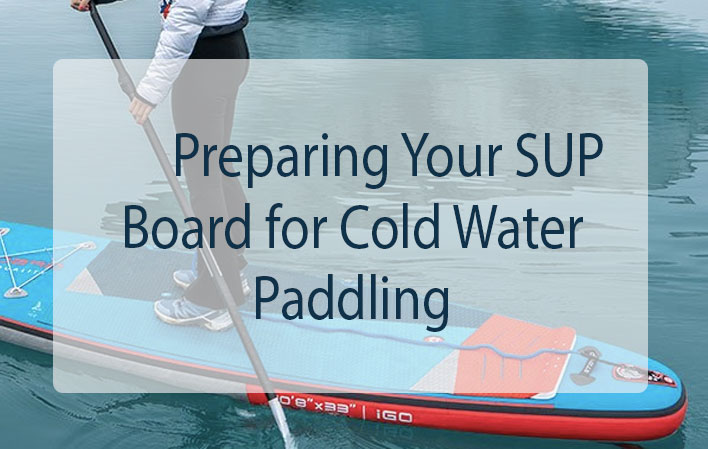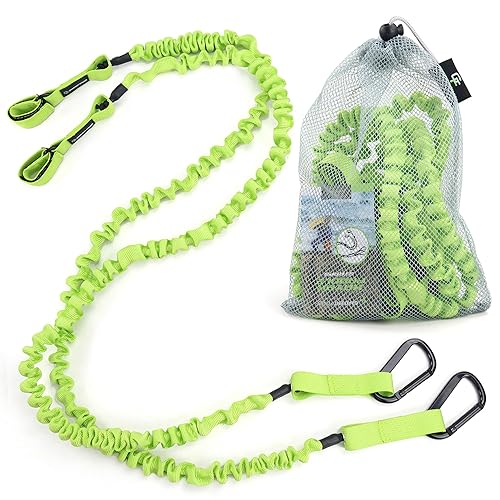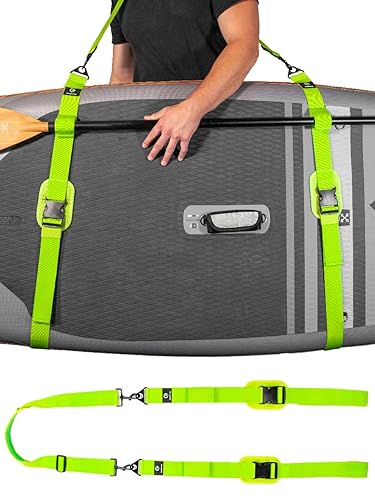Paddleboarding is a fantastic way to explore the beauty of nature and enjoy the water. Whether you’re cruising down a calm river, gliding along a serene lake, or tackling ocean waves, stand-up paddleboarding (SUP) offers a unique perspective of the world around you. While many people associate SUP with warm, sunny days, cold water paddling can be equally exhilarating if done safely and properly.
Cold water paddling presents its own set of challenges and considerations. As the temperature drops, the risk of hypothermia and other cold-related illnesses increases. Additionally, your equipment, particularly your SUP board, requires special attention to ensure it performs well in colder conditions.
In this comprehensive guide, we’ll walk you through the essential steps to prepare your SUP board for cold water paddling. We’ll cover everything from choosing the right gear and clothing to understanding the unique risks associated with cold water paddling and how to stay safe. So, let’s dive in!
Understanding the Importance of Cold Water Safety
Before we delve into the specifics of preparing your SUP board for cold water paddling, it’s crucial to understand the unique risks associated with cold water environments. Water temperatures below 70°F (21°C) can pose serious threats to your safety.
Hypothermia is a primary concern. It occurs when your body loses heat faster than it can produce it, causing your core temperature to drop to a dangerously low level. Hypothermia can set in quickly, even in water temperatures above freezing. Symptoms include shivering, confusion, and loss of coordination, which can make it nearly impossible to rescue yourself.
Cold shock response is another immediate danger when you enter cold water. The sudden exposure to cold water can cause an involuntary gasp reflex and rapid, shallow breathing, which can lead to swallowing water and drowning.
Given these risks, it’s essential to take every precaution when paddling in cold water. Preparing your SUP board and yourself is key to staying safe and enjoying your cold water adventures.
Choosing the Right SUP Gear
To stay warm and safe while cold water paddling, you’ll need the right gear. Here are some essential items to consider:
Wetsuits and Drysuits
Wetsuits are designed to trap a thin layer of water between your body and the suit. This water warms up from your body heat, providing insulation. Wetsuits come in various thicknesses, typically measured in millimeters (mm). Thicker wetsuits are suitable for colder water.
Drysuits, on the other hand, are completely waterproof and keep you dry throughout your paddling session. They offer excellent insulation, but they are bulkier and more expensive than wetsuits. Drysuits are better suited for extremely cold water conditions.
| Item Name | Pros | Cons |
|---|---|---|
| Wetsuits | – Affordable | – Limited cold protection |
| – Provides buoyancy | – May restrict movement | |
| – Suitable for various water temperatures | – Less effective in frigid water | |
| Drysuits | – Excellent cold protection | – Expensive |
| – Keeps you completely dry | – Bulkier than wetsuits | |
| – Suitable for extreme cold | – May require extra layers | |
| conditions |
Booties and Gloves
Booties and gloves are essential for keeping your extremities warm in cold water. Neoprene booties provide insulation for your feet and also protect them from sharp objects in the water. Neoprene gloves offer a similar benefit for your hands.
Personal Flotation Devices (PFDs)
A PFD is a critical piece of safety equipment for any paddler, regardless of water temperature. In cold water, wearing a PFD is even more crucial, as it can help keep you afloat if you become incapacitated due to cold shock or hypothermia.
Leashes
A leash tethers you to your SUP board, preventing it from drifting away if you fall off. In cold water, this can be a lifesaver, as swimming to retrieve your board can quickly lead to hypothermia. Ensure your leash is in good condition and securely attached to both you and your board.
Inspecting and Maintaining Your SUP Board
Now that you have the necessary gear, it’s time to focus on your SUP board. Proper maintenance ensures that your board performs well and keeps you safe on the water.
Cleaning and Waxing
Before heading out for a cold water paddle, give your board a thorough cleaning. Remove any dirt, sand, or debris that could scratch the surface or damage the fin box. Use marine cleaner or simply mild soap and water, and avoid abrasive scrubbers.
After cleaning, apply a fresh coat of marine cleaner or wax to enhance traction. In cold water, maintaining good grip on your board is essential for stability and control.
Checking for Damage
Inspect your SUP board for any signs of damage, such as cracks, dings, or delamination. Cold water can exacerbate existing problems, so it’s crucial to address any issues before hitting the water. If you’re unsure about the condition of your board, consult with a professional for repairs or replacement.
Fin Selection
The type of fin you use can impact your performance in cold water. In colder conditions, consider using a larger fin with more surface area. A larger fin provides better stability and tracking, which can be especially helpful when paddling in choppy or cold water.
Cold Water Paddling Techniques
Now that you’re geared up and your board is in excellent condition, let’s explore some techniques to enhance your cold water paddling experience.
Entering the Water Safely
When entering cold water, take it slow. The cold shock response can cause involuntary gasping and disorientation, so it’s vital to maintain control. Here’s a step-by-step guide for entering the water safely:
- Wear your wetsuit or drysuit: Put on your cold water gear before you reach the water’s edge.
- Use booties and gloves: Protect your feet and hands from the initial shock of the cold water.
- Gradual entry: Slowly wade into the water, allowing your body to acclimate to the temperature.
- Control your breathing: If the cold water causes you to gasp, focus on slowing your breath until you regain control.
Maintaining Balance and Posture
Cold water can make your muscles tense up, affecting your balance and posture. To stay upright on your SUP board:
- Bend your knees slightly: This lowers your center of gravity and improves stability.
- Engage your core: Keeping your core muscles activated helps you maintain balance.
- Relax your shoulders: Tension in your upper body can throw off your balance, so keep your shoulders relaxed.
Paddling Techniques
Efficient paddling is essential for maneuvering in cold water. Here are some paddling techniques to keep in mind:
- Maintain a steady rhythm: Consistent, rhythmic strokes help you stay balanced and make efficient progress.
- Use proper form: Extend your paddle fully into the water and engage your core and back muscles to power your strokes.
- Practice turning: Cold water can impact your board’s responsiveness. Practice turning techniques in calm water to become more confident in your abilities.
Emergency Preparedness
No matter how well-prepared you are, emergencies can still happen. It’s essential to be equipped and knowledgeable about emergency procedures when cold water paddling.
Communication Devices
Carry a communication device with you, such as a waterproof VHF radio or a cell phone in a waterproof case. These devices allow you to call for help in case of an emergency. Familiarize yourself with local emergency contact numbers and the use of the device before heading out.
Cold Water Rescue Techniques
Knowing how to rescue yourself and others in cold water is crucial. Here are some basic cold water rescue techniques to consider:
- Self-rescue: If you fall off your board, climb back on as quickly as possible to minimize heat loss.
- Assist others: If you see someone in distress, use your leash to reach them and help them back onto their board.
- Call for help: If you or someone else is in serious trouble, use your communication device to call for assistance immediately.
12.06.2024 00:13
Cold water paddling can be a rewarding and invigorating experience, but it comes with its own set of challenges and risks. Proper preparation is the key to staying safe and comfortable in cold water conditions.
By choosing the right gear, inspecting and maintaining your SUP board, practicing cold water paddling techniques, and being prepared for emergencies, you can enjoy the beauty of paddling even in chilly temperatures. Remember that safety should always be your top priority, so never underestimate the potential dangers of cold water, and always paddle with caution and respect for the environment.
Thesandshore.com is a source where the post Preparing Your SUP Board for Cold Water Paddling appeared first.










